Tennis courts come in four types of surfaces, each with its own impact on how the game is played. Whether you’re a beginner or a seasoned player, knowing the differences between Grass, Clay, Hard, and Synthetic courts is crucial for refining your skills and strategy.
In this article we explore 4 types of tennis court surfaces, highlighting their unique characteristics, effects on gameplay, and maintenance requirements. Discover how understanding these surfaces can help you enhance your performance and choose the best court for your game.
Table of Contents
Understanding Tennis Court Basics
Before we dive into the specifics of each surface, let’s start with the fundamentals of a tennis court. A standard tennis court for doubles is 78 feet long and 36 feet wide. It’s divided by a net that stands 3 feet high at the center and 3.5 feet at the posts. The court features several key markings, including:
- Baseline: The boundary line at the back of the court, which players use to determine the length of their shots.
- Service Line: Located 21 feet from the net, this line indicates where serves must land.
- Center Mark: Located at the midpoint of the baseline, helping players position themselves for serves and returns.
Each surface affects the ball’s bounce and speed, which can significantly influence player movement and strategy. Understanding these effects will help you adapt your game to the court. Let’s explore each surface in detail.
Grass Tennis Courts
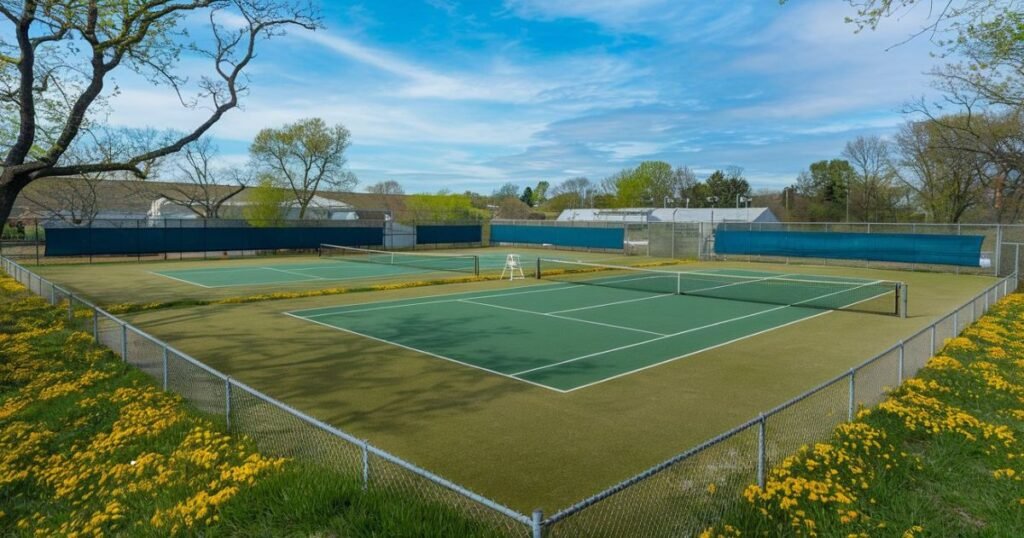
Grass courts are the traditional surface for tennis, made with natural grass grown on a base of soil or sand. The lush, green appearance adds to their classic appeal. Maintaining these courts requires a lot of work, including regular mowing, watering, and seasonal reseeding to keep the grass healthy and even.
Impact on Gameplay
Grass courts are known for their high speed and low bounce. The ball skids off the surface, making the game quicker and favoring players who are agile and quick at the net. This surface rewards strong serves and fast reactions, which is why serve-and-volley players often excel here.
Famous Tournament
Wimbledon, the oldest and most prestigious tennis tournament, is played on grass courts. The tournament’s unique challenges and traditions make it a highlight of the tennis calendar and a test for players’ adaptability and skill.
Pros:
- Fast play and low bounce.
- Gentle on the joints.
- Great appearance.
Cons:
- Requires a lot of maintenance.
- Can be affected by the weather.
- Wear out over time and needs repairs.
Maintenance Tips
- Regular Mowing: Keep the grass at an optimal height to ensure a consistent bounce.
- Watering: Regular watering helps maintain the grass’s health and playability.
- Reseeding: Periodic reseeding helps repair worn spots and maintain a smooth surface.
Clay Tennis Courts
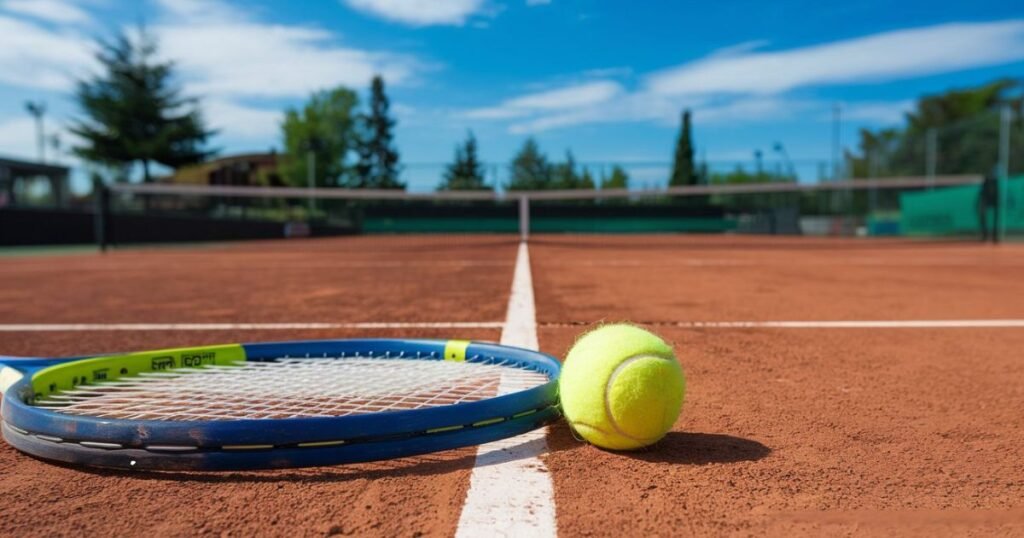
Clay courts are made of crushed stone, brick, or shale, and are often colored red or green. There are two primary types of clay courts: red clay (common in Europe and South America) and green clay (Har-Tru, popular in the U.S.). These courts require frequent rolling and maintenance to maintain a consistent surface.
Impact on Gameplay
Compared to grass courts, clay courts are slower and have a higher bounce. This surface is ideal for players who rely on endurance and strategic play. The slower pace favors baseline rallies, allowing players to construct points and wear down opponents over long rallies. The surface also tends to be softer on the body compared to hard courts.
Famous Tournament
The French Open is held on clay courts and is renowned for its demanding and strategic gameplay. The tournament’s clay surface tests players’ endurance and tactical skills, making it a unique and challenging event in the tennis calendar.
Pros:
- Promotes long, strategic rallies.
- Soft on the body.
- Good for building points.
Cons:
- Can be slippery when wet.
- Requires regular maintenance.
- A slower pace may not suit everyone.
Maintenance Tips
- Rolling: Regular rolling helps keep the surface even and firm.
- Brushing: Daily brushing removes debris and maintains the surface’s smoothness.
- Watering: Proper watering keeps the clay dust-free and playable.
Hard Tennis Courts
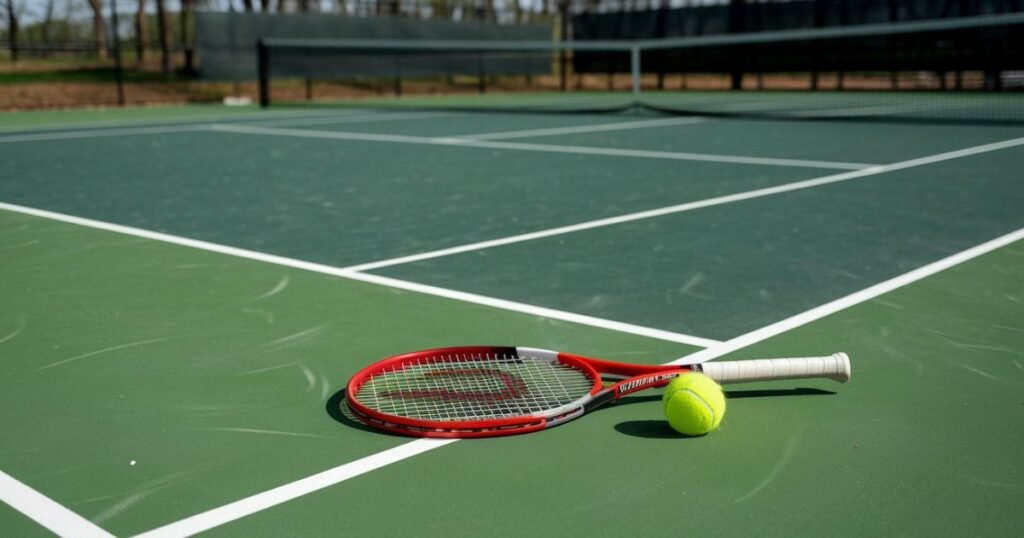
Hard courts are made from asphalt or concrete and are covered with a synthetic acrylic layer. They are known for their durability and relatively low maintenance. Hard courts are versatile and can be customized with different coatings to affect the speed and bounce of the game.
Impact on Gameplay
Hard courts provide a consistent bounce and medium speed, making them suitable for various playing styles. The surface supports both baseline and net play, allowing players to adapt their strategies depending on their strengths. The predictability of the bounce helps players practice and refine their skills effectively.
Famous Tournaments
The US Open and Australian Open are major tournaments played on hard courts. These events are known for their exciting, fast-paced matches and the diverse range of playing styles they showcase.
Pros:
- Durable and easy to maintain.
- Balanced surface for different styles.
- Consistent bounce.
Cons:
- Can be hard on the joints.
- Needs periodic resurfacing.
Maintenance Tips
- Regular Cleaning: Keep the surface clean to prevent debris buildup.
- Resurfacing: Periodically resurface the court to maintain a smooth and consistent playing surface.
- Crack Repairs: Fix any cracks or damage promptly to avoid further deterioration.
Synthetic Tennis Courts
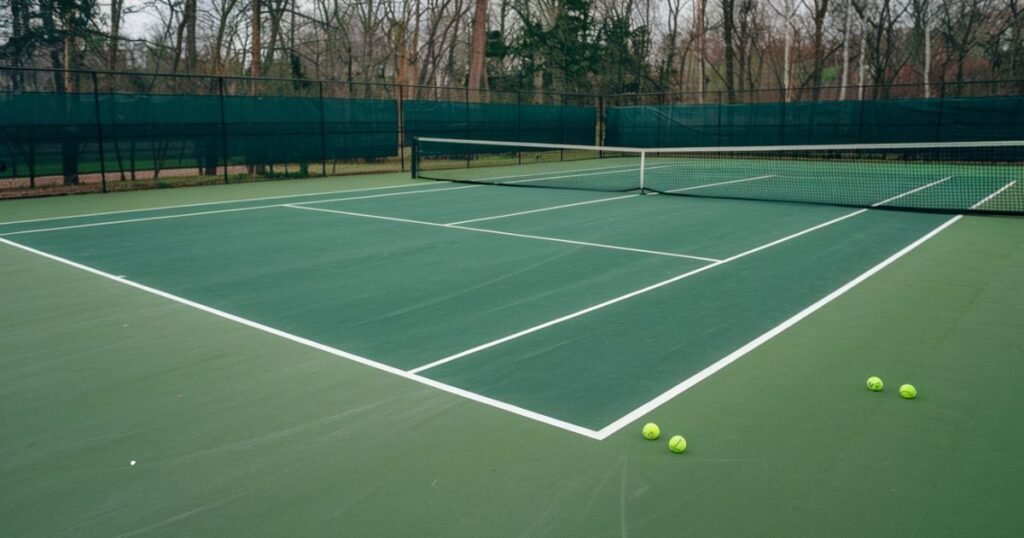
Synthetic courts are designed to mimic the feel of natural surfaces using artificial materials like synthetic grass or carpet. They are used in both indoor and outdoor settings and are known for their low maintenance and consistent play conditions.
Impact on Gameplay
Synthetic surfaces provide a medium-speed game with a consistent bounce. They combine elements from natural grass and clay surfaces, making them versatile for different types of play. Synthetic courts are often used in recreational settings and indoor facilities, providing a reliable playing experience.
Pros:
- Low maintenance.
- Consistent play.
- Versatile.
Cons:
- Bounce quality can vary.
- Less natural feel compared to real grass or clay.
Maintenance Tips
- Regular Cleaning: Clean the surface regularly to remove debris and maintain playability.
- Inspection: Check for wear and tear and address any issues promptly.
- Periodic Replacement: Depending on usage, the synthetic surface may need to be replaced over time to ensure optimal performance.
Comparing Court Surfaces
Gameplay Differences
- Grass Courts: Fast pace, low bounce, ideal for quick and aggressive play.
- Clay Courts: Slower pace, high bounce, good for endurance and strategic play.
- Hard Courts: Balanced pace and bounce, suitable for a variety of styles.
- Synthetic Courts: Consistent conditions that are adaptable to various surface characteristics.
Adapting Strategies:
- Grass: Focus on quick serves and net play.
- Clay: Emphasize patience, shot placement, and constructing points.
- Hard: Utilize a mix of baseline and net play strategies.
- Synthetic: Adapt to the surface’s speed and bounce characteristics.
Maintenance and Durability
- Grass Courts: High maintenance, affected by weather.
- Clay Courts: Require frequent rolling, brushing, and proper watering.
- Hard Courts: Durable but hard on joints, needs periodic resurfacing.
- Synthetic Courts: Low maintenance with periodic cleaning and inspection.
- Cost Considerations: Compare the initial investment and ongoing maintenance costs for each surface type.
- Durability: Assess how each surface holds up over time and the potential need for repairs or replacements.
Choosing the Right Surface
Factors to Consider
- Playing Style: Match your style with the surface that complements your strengths (e.g., Grass for fast play, clay for long rallies, hard for versatility, and synthetic for consistent conditions.)
- Accessibility and Budget: Consider the availability of courts in your area and the maintenance cost.
- Personal Preferences: Reflect on comfort and performance preferences to choose the most suitable surface for your game.
Recommendations
- Beginners: Hard courts are recommended for their balanced nature and lower maintenance.
- Experienced Players: Grass or clay courts can offer a more challenging and varied experience, depending on your playing style.
Conclusion
Mastering the various types of tennis court surfaces is essential for any player looking to improve their game. Each surface Grass, Clay, Hard, and Synthetic presents its own set of challenges and advantages, influencing everything from ball bounce to gameplay strategy. By gaining insight into these surfaces, you can tailor your training, adapt your strategy, and ultimately elevate your performance on the court. Equip yourself with this knowledge to make informed decisions and enjoy a more versatile and successful tennis experience.
FAQs
What are the different types of tennis court surfaces?
There are four main types of tennis court surfaces: Grass, Clay, Hard, and Synthetic. Each surface has its own characteristics and affects gameplay differently.
Which tennis court surface is the fastest?
Grass courts are generally considered the fastest surface because the ball skids and bounces lower, favoring fast-paced games.
What are the most common types of tennis court surfaces?
Hard courts are the most common surface, especially for public courts, due to their durability and low maintenance.
How does clay court affect tennis gameplay?
Clay courts slow down the ball and produce higher bounces, leading to longer rallies and more strategic play.
What is the difference between hard and synthetic tennis courts?
Hard courts are made of asphalt or concrete with a top coating, while synthetic courts often use artificial grass or other man-made materials designed to simulate different surfaces.
Which types of tennis court surfaces are best for beginners?
Hard courts are often recommended for beginners because they offer a consistent bounce and are more forgiving than Grass or Clay courts.
How do different court surfaces impact player performance?
Each surface affects ball speed, bounce, and player movement. For example, Grass favors fast players, Clay requires strategic play and Hard courts offer a balanced game.
What surface is used at Wimbledon?
Wimbledon uses Grass courts, making it the only Grand Slam tournament played on this surface.
Do tennis courts require different types of maintenance based on surface?
Yes, Grass courts need regular mowing and watering, Clay courts require consistent rolling and watering, and Hard courts are easier to maintain but may need resurfacing over time.

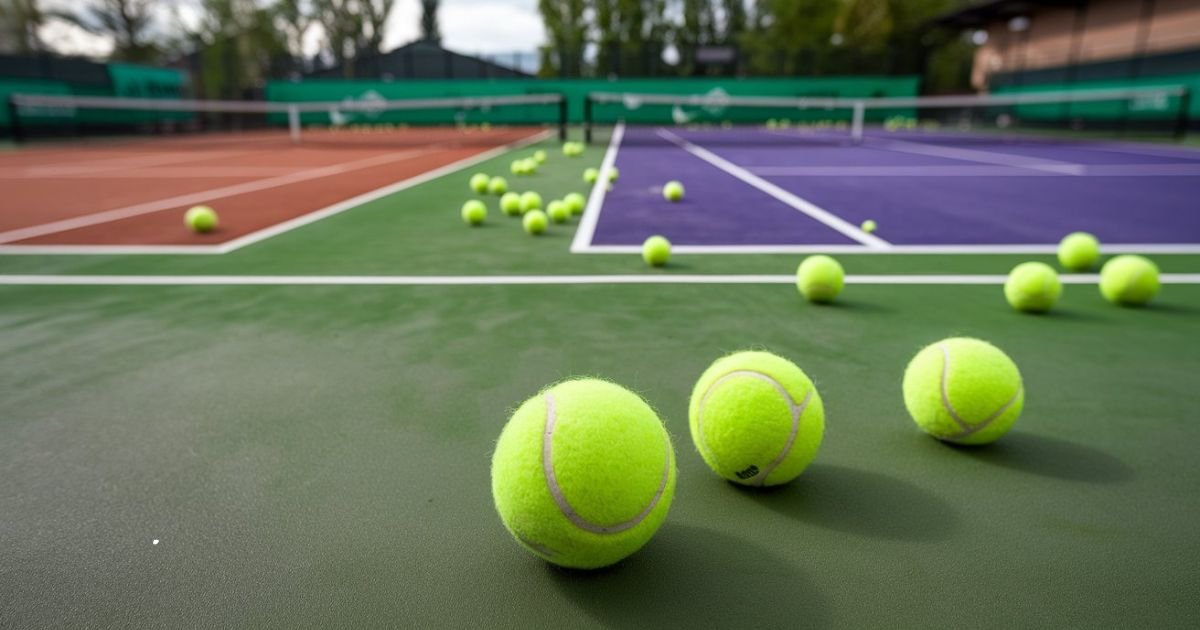
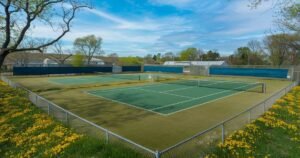
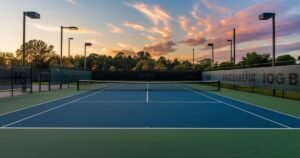
Pingback: Learn Tennis Court Dimensions and Layout in Simple Terms